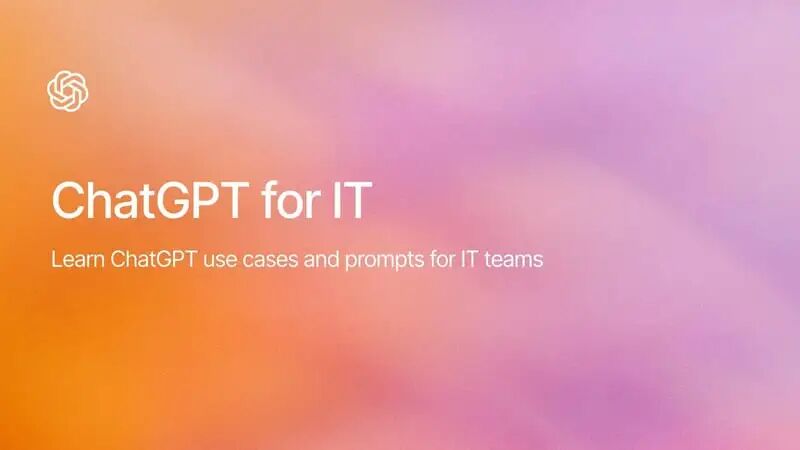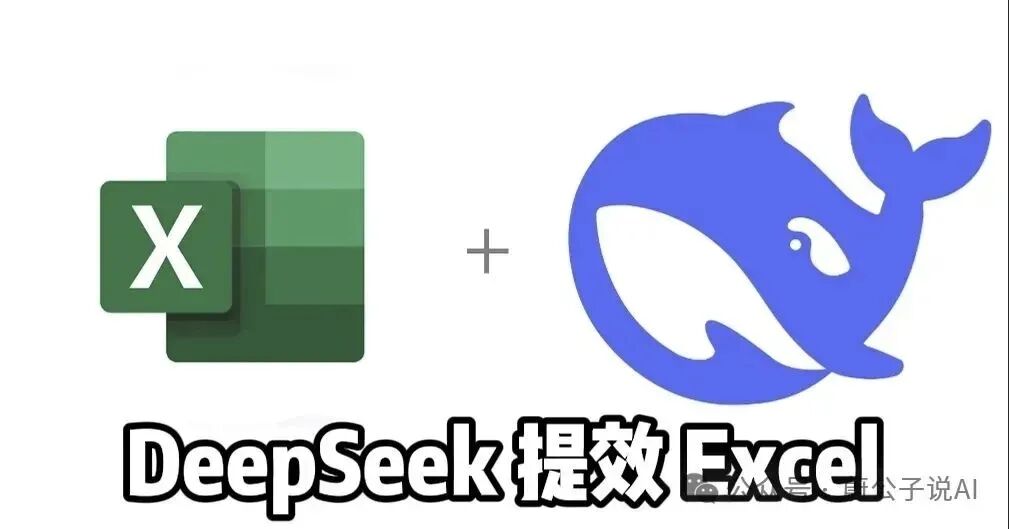 以下内容都来自 OpenAI。IT 团队负责确保系统安全、高效和可访问 —— ChatGPT 可以帮助他们更快地工作并减少手动工作。它可以总结日志、编写自动化步骤、解释复杂的配置,并帮助向非技术团队传达技术变更。
以下内容都来自 OpenAI。IT 团队负责确保系统安全、高效和可访问 —— ChatGPT 可以帮助他们更快地工作并减少手动工作。它可以总结日志、编写自动化步骤、解释复杂的配置,并帮助向非技术团队传达技术变更。
云与供应商评估ChatGPT 可以帮助比较云服务、IT 供应商和新兴技术解决方案,以指导战略决策。使用深度研究和网络搜索获取更深入的实时洞察。
比较云服务提供商
1
2
3
针对我们的用例 [插入工作负载或环境] 比较 AWS、Azure 和 GCP。
考虑成本、正常运行时间、全球可用性和集成便利性。
使用 2025 年的数据进行研究,并在末尾提供比较表和推荐意见。
Consider cost, uptime, global availability, and ease of integration.
Research using 2025 data, and present a table comparing each provider with a recommendation at the end.
生成供应商对比图表
1
2
3
研究并比较适用于企业的远程访问供应商。
重点关注功能、价格、集成和支持质量。
使用 2025 年的数据,并在对比表中总结研究结果,附上备注。
Focus on features, pricing, integrations, and support quality.
Use 2025 data, and summarize the findings in a comparison table with notes.
比较 AI 可观测性工具
1
2
3
我是 [插入公司] 的 IT 经理,正在评估可观测性平台。
研究 2025 年当前的供应情况、定价、支持的环境和关键差异化因素。
包含引用,并在比较表中总结见解,为中型工程组织提供建议。
Research current offerings, pricing, supported environments, and key differentiators in 2025.
Include citations and summarize insights in a comparison table with a recommendation for a mid-size engineering org.
调查零信任框架
1
2
3
4
我是一名安全架构师,正在研究采用零信任模型。
研究领先框架(如 NIST 800-207)以及 2024–2025 年的最佳实践更新。
如有可能,包含实际实施案例研究。
提供总结性比较和面向高管的简报。
Research leading frameworks (e.g., NIST 800-207) and recent updates to best practices in 2024–2025.
Include real-world implementation case studies where possible.
Provide a summarized comparison and an executive-ready briefing.
IT 合规与安全ChatGPT 可用于指导合规要求、访问审查和安全态势评估的研究与文档编制。
评估全球数据驻留法律
1
2
3
4
我是 IT 合规负责人,正在规划全球数据存储架构。
研究 2025 年欧盟、美国、亚太地区和拉丁美洲的数据驻留要求,
包括监管限制和首选云区域。
引用官方文档,按地区分组总结调查结果。
Research 2025 data residency requirements across the EU, US, APAC, and LATAM.
Include regulatory restrictions and preferred cloud regions.
Cite official documentation and summarize findings in a table grouped by region.
分析远程访问工具
1
2
3
4
作为 IT 服务交付主管,我需要为我们的混合团队选择安全、可扩展的远程访问工具。
比较 2025 年企业可用的供应商(如 BeyondTrust、TeamViewer Tensor、Chrome Remote Desktop)。
重点关注 SSO 支持、加密、会话记录和定价。
提供以安全为重点的高管摘要,并附上主要来源链接。
Compare current vendors (e.g., BeyondTrust, TeamViewer Tensor, Chrome Remote Desktop) for enterprise use in 2025.
Focus on SSO support, encryption, session logging, and pricing.
Provide a security-focused executive summary with links to primary sources.
生成合规检查清单
1
2
3
根据 SOC 2 指南,创建一份 IT 特定控制措施的检查清单,用于即将进行的内部审计。
参考现有的审计准备文档作为背景。
按领域(如访问控制、变更管理、事件响应)组织检查清单。
Use this existing audit prep document as background.
Organize the checklist by domain (e.g., access, change management, incident response).
验证访问控制
1
2
3
审查用户、角色和系统的访问矩阵。
检查每个用户的访问级别是否符合最小权限原则。
识别可能的过度授权,并提供一张表格列出可能需要缩减权限的用户。
Check whether each user’s access level follows our least-privilege policy.
Identify potential overprovisioning, and provide a table listing users whose permissions may need adjustment.
审查 API 安全状况
1
2
3
审查此 API 架构及示例流量日志。
识别常见的 API 安全问题,如输入验证不足或缺乏身份验证。
提供一份要点式问题清单及建议修复方案。
Identify common API security issues such as poor input validation or lack of authentication.
Provide a bullet-point list of findings with suggested fixes.
草拟 IT 入职清单
1
2
从 IT 角度创建新员工入职清单。包括账户配置、安全培训和硬件设置等关键步骤。
参考我们当前流程的概要,将清单按天或周组织呈现。
Use this outline of our current process, and present the checklist organized by day or week.
生成硬件生命周期政策
1
2
3
草拟公司笔记本电脑和台式机的生命周期管理政策。
参考该设备年龄和当前更换成本的电子表格。
撰写正式文件,提供关于更换时间线、支持窗口和环境考量的指导。
Reference this spreadsheet of device ages and current replacement costs.
Write a formal document with guidance on replacement timelines, support windows, and environmental considerations.
草拟资产清单政策
1
2
3
编写一份正式的 IT 资产清单维护和审计政策。
以这份工具、部门和利益相关者的清单为起点。
包括清单核对的目的、责任和流程。
Use this list of tools, departments, and stakeholders as a starting point.
Include purpose, responsibilities, and process for inventory reconciliation.
帮助优先处理 IT 工单
1
2
3
审查这份开放的 IT 支持工单队列。
使用基于影响、紧急性和 SLA 的优先级评估标准。
相应地重新排序工单,并以优先级后置清单形式呈现,每个排序附简短理由。
Use this prioritization rubric based on impact, urgency, and SLA.
Reorder the tickets accordingly and present the list as a prioritized backlog with a short reason for each ranking.
跟踪硬件生命周期风险
1
2
3
使用包含购买日期、型号和操作系统版本的设备清单文件。
突出显示已过生命周期或接近更新阈值的资产。
创建一个有风险设备的表格,并为 IT 领导层提供叙述性摘要。
Highlight which assets are past end-of-life or nearing refresh thresholds.
Create a table of at-risk devices and include a narrative summary for IT leadership.
撰写事件事后分析报告
1
2
3
总结最近的 [插入系统或服务] 停机事件。
包括根本原因、事件时间线、用户影响和采取的措施。
使用事件工单或作战室笔记中的信息,将总结格式化为可分享的内部复盘报告。
Include the root cause, timeline of events, user impact, and actions taken.
Use information from the incident ticket or war room notes, and format the summary as a shareable internal postmortem report.
创建灾难恢复计划草案
1
2
3
为关键生产服务创建灾难恢复计划草案。
使用系统图和恢复目标(RTO、RPO)。
将计划按停机前、停机期间和停机后的步骤组织。
Use this system diagram and our recovery objectives (RTO, RPO).
Organize the playbook into steps to take before, during, and after a service outage.
撰写内部停机通知
1
2
3
撰写专业的内部通讯,宣布 [插入系统或工具] 的计划停机。
包括时间安排、受影响用户、对工作的影响,以及问题咨询联系方式。
以 IT 团队更新的口吻撰写消息。
Include timing, affected users, impact on work, and who to contact for questions.
Write the message in the tone of an IT team update.
将错误日志翻译为普通语言
1
2
3
帮助将系统错误日志翻译成非技术高管能够理解的语言。
在需要时使用定义,用几句话总结每条日志条目的含义。
以邮件草稿的形式呈现解释。
Use definitions where needed, and summarize what each log entry means in a few clear sentences.
Present the explanation as an email draft.
评估 SaaS 工具冗余
1
2
3
查看 IT、工程和运维部门当前使用的 SaaS 工具清单。
使用附件电子表格,包含成本、团队使用情况和工具功能。
识别重叠工具,并推荐 3–5 个整合候选方案,在简短报告中解释每个方案被选择的原因。
Use the attached spreadsheet with cost, team usage, and tool functions.
Identify overlapping tools and recommend 3–5 candidates for consolidation, explaining why each was chosen in a short summary report.
总结系统健康趋势
1
2
3
分析过去 30 天的系统健康日志。
重点关注 CPU/内存峰值、服务中断和重复错误代码。
提供关键问题简洁总结,并添加可能原因或需要跟进的简短评论。
Focus on spikes in CPU/memory, service outages, and recurring error codes.
Provide a concise summary of the key issues and add brief commentary on possible causes or needed follow-ups.
建议系统监控改进
1
2
3
根据当前配置和最近警报历史,审查 [插入系统] 的监控设置。
识别 2–3 个改进领域,例如警报覆盖不足、噪音减少或指标调整。
以简短内部备忘录形式提出建议。
Identify 2–3 areas for improvement, such as gaps in alert coverage, noise reduction, or metrics tuning.
Present the suggestions in a short internal memo.
分析服务正常运行时间和事件频率
1
2
3
审查 [插入服务] 过去一个季度每日正常运行百分比和事件日志的 CSV 文件。
识别停机模式、按严重程度划分问题频率,并计算整体正常运行时间。
在简短报告中总结发现并建议改进措施。
Identify patterns in outages, frequency of issues by severity, and calculate overall uptime.
Summarize findings and suggest actions for improvement in a brief report.
审计用户访问日志以发现异常
1
2
3
分析用户访问日志导出文件。
识别访问频率异常、非工作时间登录或失败尝试的用户或 IP。
标记可疑模式,并以安全审查格式总结结果。
Identify users or IP addresses with unusual access frequency, after-hours logins, or failed attempts.
Flag suspicious patterns and summarize results in a security review format.
预测 IT 支持工单量
1
2
3
分析过去 12 个月每周支持工单导出数据。
识别季节性趋势,并预测下一季度工单量。
可视化趋势,并提供产能规划评论。
Identify seasonality trends and forecast volume for the next quarter.
Visualize the trend and provide commentary for capacity planning.
© 版权声明
文章版权归作者所有,未经允许请勿转载。




